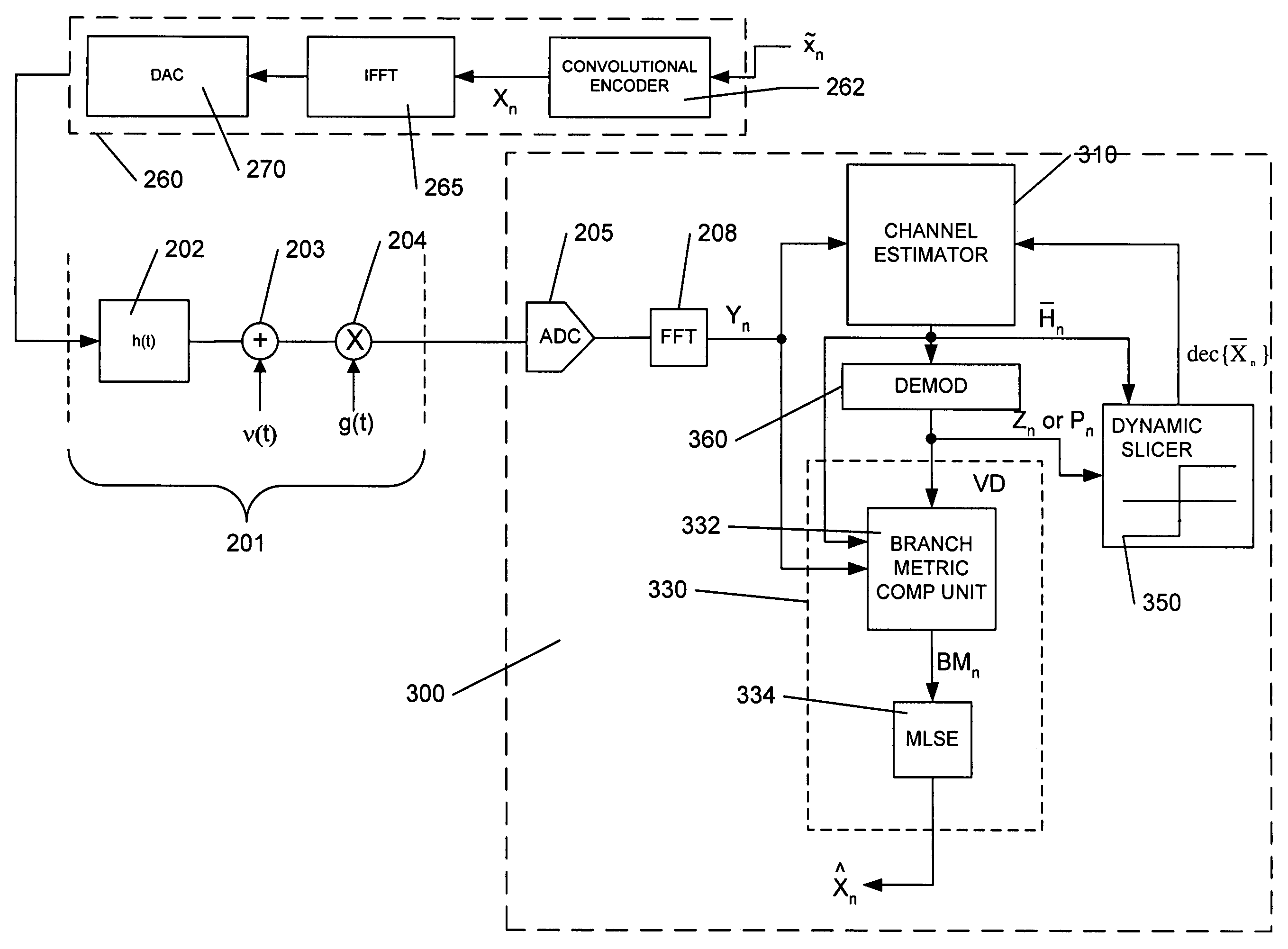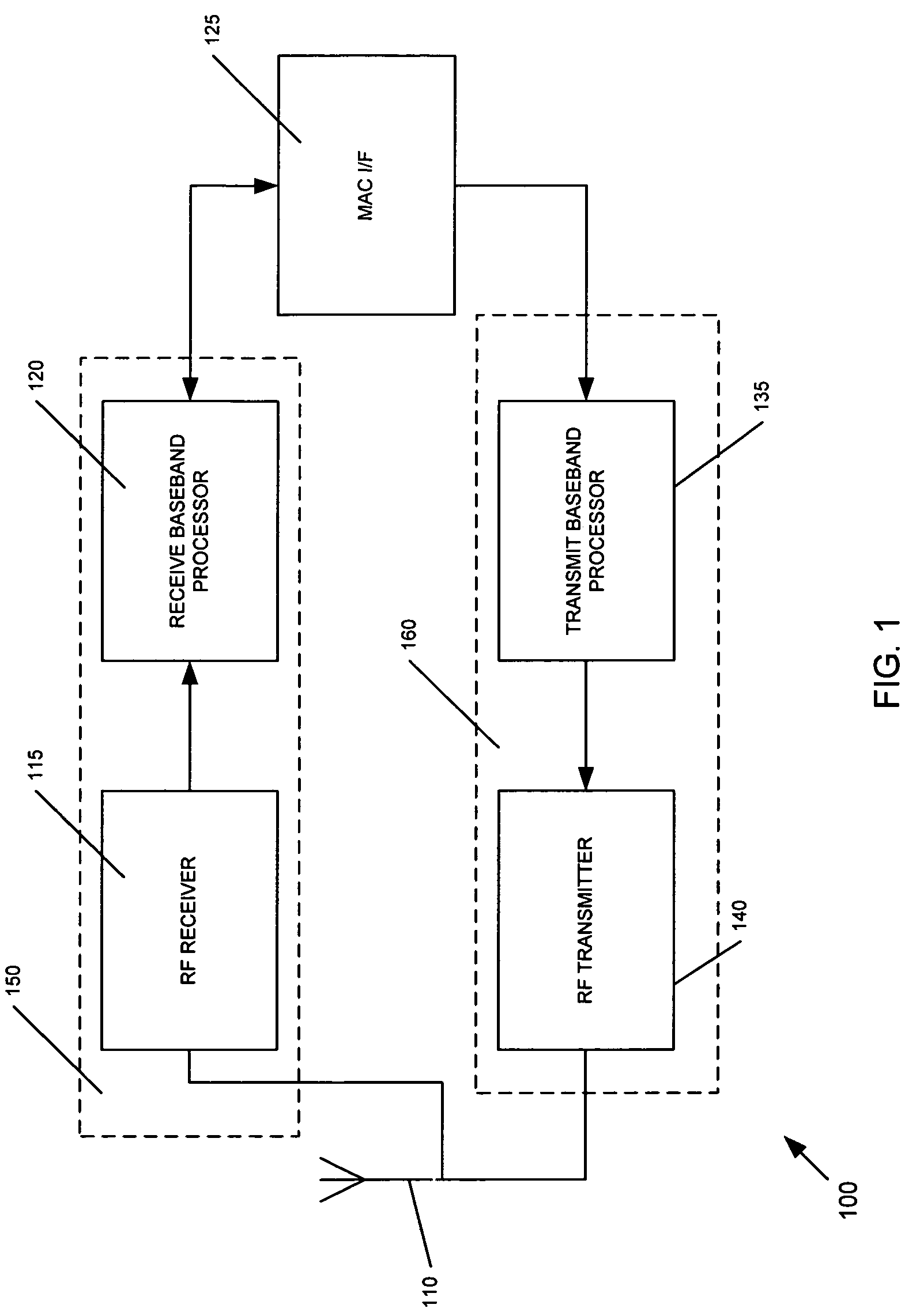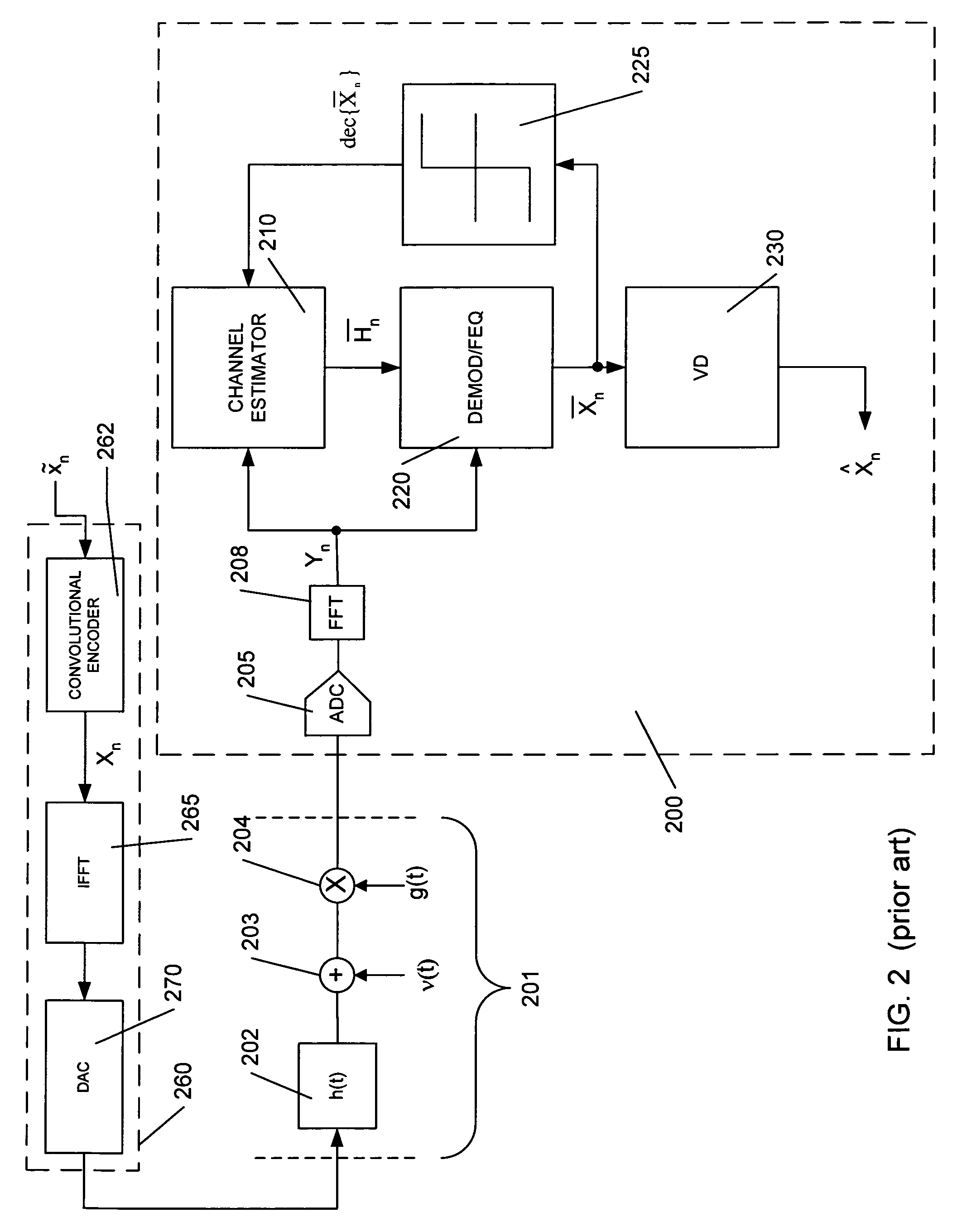Divisionless baseband equalization in symbol modulated communications
a technology of baseband equalization and symbol, applied in the field of divisionfree baseband equalization of symbol modulated signals, can solve problems such as providing uncompromised performance over known receiver configurations, and achieve the effects of reducing complexity, reducing complexity, and improving decoder performan
- Summary
- Abstract
- Description
- Claims
- Application Information
AI Technical Summary
Benefits of technology
Problems solved by technology
Method used
Image
Examples
Embodiment Construction
[0030]The first section below describes joint equalization and Viterbi decoding consistent with several disclosed embodiments of the invention, including those incorporating CSI and hard-decision decoding features. Section 2 describes complexity reduction techniques for computing the branch metrics in a Viterbi decoder with CSI. Finally, Section 3 describes Viterbi decoder complexity reduction in an MRC plural receive antennae environment.
Section 1—Joint Equalization and Decoding
[0031]We propose eliminating the division operations in Equation (1) discussed above and demodulate the received symbols using Method I, in rectangular form:
Zk,n={overscore (H)}*k,n·Yk,n, (2)
or, Method II, in polar form:
Pk,n=e−jΦk,n·Yk,n, (3)
where
{overscore (H)}k,n=|{overscore (H)}k,n|ejΦk,n. (4)
[0032]The in-phase and quadrature demodulated symbols are the real and imaginary parts of {overscore (X)}k,n (i.e. Re{{overscore (X)}k,n} and Im{{overscore (X)}k,n}) respectively. The following discusses the chang...
PUM
 Login to View More
Login to View More Abstract
Description
Claims
Application Information
 Login to View More
Login to View More - R&D
- Intellectual Property
- Life Sciences
- Materials
- Tech Scout
- Unparalleled Data Quality
- Higher Quality Content
- 60% Fewer Hallucinations
Browse by: Latest US Patents, China's latest patents, Technical Efficacy Thesaurus, Application Domain, Technology Topic, Popular Technical Reports.
© 2025 PatSnap. All rights reserved.Legal|Privacy policy|Modern Slavery Act Transparency Statement|Sitemap|About US| Contact US: help@patsnap.com



